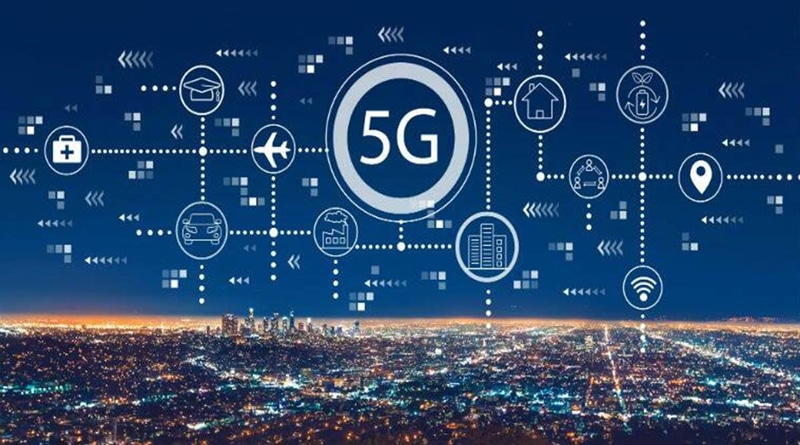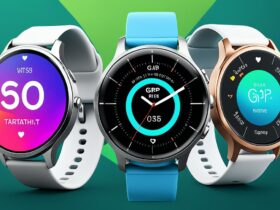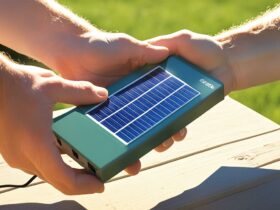The world of technology is constantly evolving, and one of the most promising advancements in recent years is the combination of Internet of Things (IoT) and 5G technology. This powerful duo has the potential to revolutionize the way we live, work, and interact with our surroundings. In this article, we will explore the impact of 5G technology on IoT and the exciting possibilities it brings.
In the digital era, IoT has become increasingly prevalent, connecting devices and enabling them to communicate and share data seamlessly. However, the existing wireless networks often face limitations in terms of speed, capacity, and latency. This is where 5G technology comes into play.
Understanding IoT
Before delving into the benefits of 5G in IoT, let’s briefly understand what IoT entails. IoT refers to a network of interconnected devices embedded with sensors, software, and other technologies that enable them to collect and exchange data. These devices range from everyday objects such as smart home appliances to industrial machinery and even vehicles.
The Role of 5G Technology
5G, the fifth generation of wireless technology, offers significant improvements over its predecessors. With faster speeds, increased capacity, and lower latency, 5G provides a solid foundation for powering IoT devices and applications. Its key features, such as high bandwidth and ultra-reliable low latency communication (URLLC), make it an ideal match for the diverse requirements of IoT.
Benefits of 5G in IoT
Enhanced Connectivity
One of the primary advantages of 5G technology in IoT is enhanced connectivity. With its ability to support a massive number of devices simultaneously, 5G ensures seamless communication between IoT devices, creating a robust ecosystem of interconnected systems.
Faster Data Transfer
In the IoT landscape, data is the fuel that drives innovation and insights. 5G technology enables faster data transfer rates, allowing IoT devices to transmit and receive vast amounts of data in real-time. This opens up new possibilities for applications such as remote monitoring, smart grids, and autonomous vehicles.
Low Latency
Latency, the time it takes for data to travel between devices, is a critical factor in many IoT use cases. 5G offers significantly lower latency compared to previous generations, enabling near-instantaneous communication. This is crucial for applications that require real-time responsiveness, such as remote surgeries, autonomous drones, and augmented reality.
Massive IoT Deployment
5G’s ability to handle massive device density is a game-changer for IoT. It enables the deployment of a vast number of IoT devices in a small geographic area without compromising performance. This scalability allows for widespread adoption of IoT solutions across industries and facilitates the creation of smart cities, intelligent factories, and efficient healthcare systems.
Industry Applications of 5G IoT
The impact of 5G technology on IoT extends across various industries, unlocking new possibilities and transforming traditional processes. Let’s explore some notable applications:
Smart Cities
5G empowers the development of smart cities by enabling intelligent infrastructure, efficient traffic management, and improved public services. With IoT sensors and 5G connectivity, cities can monitor and optimize resource usage, enhance safety and security, and create sustainable environments.
Industrial Automation
In industries like manufacturing and logistics, 5G-enabled IoT systems facilitate automation, predictive maintenance, and real-time monitoring. Connected machines and sensors can communicate seamlessly, optimizing production processes, reducing downtime, and improving overall operational efficiency.
Healthcare
In healthcare, 5G IoT plays a vital role in remote patient monitoring, telemedicine, and precision medicine. It enables doctors to gather real-time patient data, conduct remote consultations, and perform complex surgeries with the assistance of robotic systems. This enhances healthcare accessibility, especially in rural areas, and improves patient outcomes.
Transportation and Logistics
5G IoT revolutionizes transportation and logistics by enabling connected vehicles, smart traffic management, and efficient supply chain operations. With real-time data exchange between vehicles, traffic lights, and logistics hubs, transportation becomes safer, more efficient, and less congested.
Agriculture and Farming
In the agricultural sector, 5G IoT enables precision farming, where farmers can monitor and control irrigation systems, analyze soil conditions, and optimize crop yield. IoT devices and 5G connectivity provide valuable insights into weather patterns, crop health, and resource management, leading to increased productivity and sustainability.
Challenges and Future Prospects
While the combination of 5G and IoT presents numerous benefits, it also poses challenges. Security concerns, network infrastructure requirements, and compatibility issues need to be addressed for seamless integration. However, ongoing advancements in technology and collaborative efforts between stakeholders are paving the way for a brighter future for IoT with 5G.
Conclusion
The convergence of IoT and 5G technology is a significant milestone in the digital revolution. With enhanced connectivity, faster data transfer, low latency, and massive IoT deployment, 5G technology is revolutionizing the way we interact with our surroundings. Its impact spans across industries, creating smarter cities, more efficient industries, and improved healthcare and agriculture systems. As we move forward, addressing challenges and seizing the opportunities presented by 5G IoT will be crucial in unlocking the full potential of this groundbreaking technology.
FAQs
Q1: Is 5G necessary for IoT?
Yes, 5G technology plays a crucial role in supporting the massive connectivity and data requirements of IoT devices. Its faster speeds, low latency, and ability to handle a vast number of devices make it an ideal choice for powering IoT applications.
Q2: What are the security concerns associated with 5G IoT?
As with any connected technology, security is a significant concern in 5G IoT. With a larger attack surface and more interconnected devices, ensuring robust security measures, such as encryption, authentication, and access control, is essential to protect against potential vulnerabilities.
Q3: How will 5G IoT impact job roles and employment?
The advent of 5G IoT will create new job opportunities in areas such as IoT device development, network management, data analytics, and cybersecurity. It will also transform existing job roles by requiring a new skill set that aligns with the demands of this interconnected ecosystem.
Q4: Can 5G IoT improve energy efficiency?
Yes, 5G IoT has the potential to improve energy efficiency in various sectors. By enabling smart grids, intelligent energy management systems, and optimized resource usage, it can contribute to reducing energy consumption and promoting sustainability.
Q5: How will 5G IoT impact everyday life?
5G IoT will have a significant impact on everyday life by enabling a more connected, intelligent, and convenient lifestyle. It will enhance services such as home automation, smart transportation, healthcare accessibility, and personalized experiences, making our lives more efficient and enjoyable.







